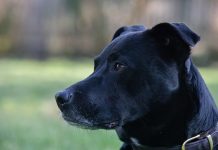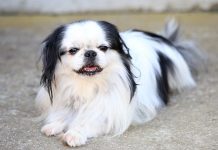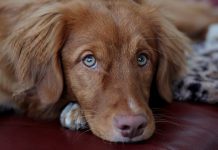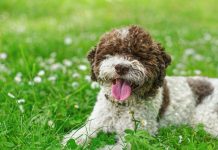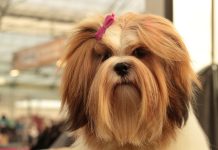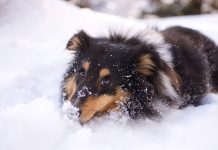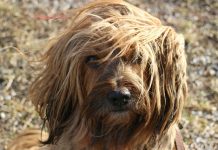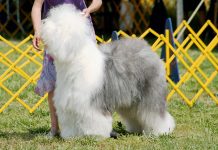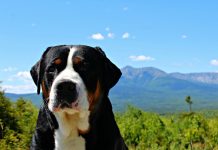History and Origins of the Siberian Husky Breed:

The Siberian Husky is a remarkable breed with a rich history that dates back thousands of years. Originating from the Chukchi people of Siberia, these dogs were bred for their endurance, strength, and ability to thrive in harsh Arctic conditions. Here’s a closer look at the history and origins of the Siberian Husky:
- Ancient Beginnings: The Siberian Husky’s history can be traced back to ancient times, where they were developed by the nomadic Chukchi people of northeastern Siberia. These indigenous people relied on the Siberian Husky for transportation, hunting, and companionship in the Arctic environment.
- Purpose and Function: Siberian Huskies were bred to pull sleds over long distances in challenging Arctic terrains. They were essential for transportation and communication across vast snowy landscapes, delivering supplies and aiding in hunting expeditions.
- Selective Breeding: The Chukchi people selectively bred Siberian Huskies to emphasize traits such as endurance, strength, agility, and resilience. Only the most capable and adaptable dogs were used for breeding, resulting in a breed uniquely suited to the Arctic climate.
- Alaskan Connection: In the early 20th century, Siberian Huskies were introduced to Alaska during the Nome Gold Rush of 1908. Huskies played a crucial role in sled dog racing and expeditions, gaining international recognition for their athleticism and stamina.
- Balto and Serum Run: One of the most famous Siberian Huskies, Balto, became a hero during the 1925 serum run to Nome, Alaska, delivering life-saving medicine to combat a diphtheria outbreak. Balto’s courageous journey captured the world’s attention and solidified the Siberian Husky’s reputation.
- AKC Recognition: The American Kennel Club (AKC) officially recognized the Siberian Husky breed in 1930. Since then, Siberian Huskies have gained popularity as family pets, working dogs, and competitive sled racers.
Today, the Siberian Husky remains a beloved breed known for its striking appearance, friendly demeanor, and adventurous spirit. While no longer used exclusively for sled pulling, Huskies thrive in active environments and excel in various canine sports and activities.
Physical Characteristics and Appearance of Siberian Huskies:
The Siberian Husky is a medium-sized working dog known for its wolf-like appearance, compact build, and stunning coat. Here are key physical characteristics and appearance traits of Siberian Huskies:
- Size: Adult Siberian Huskies typically stand between 20 to 23.5 inches (51 to 60 cm) at the shoulder and weigh between 35 to 60 pounds (16 to 27 kg). Males are slightly larger and more muscular than females.
- Coat: Siberian Huskies have a double coat that is medium in length and dense, providing insulation against cold weather. The outer coat is straight and can be any color, ranging from black, gray, and red to agouti (banded hairs) and white. The undercoat is soft and thick.
- Head and Face: Siberian Huskies have a distinctive wedge-shaped head with a medium-length muzzle and erect, triangular ears. Their almond-shaped eyes can be brown, blue, or a combination (heterochromia), adding to their striking appearance.
- Tail: Siberian Huskies have a plume-like tail that is carried in a sickle or curved shape over their back. The tail is well-furred, adding to their overall elegance.
- Build: Siberian Huskies have a compact and muscular build, reflecting their heritage as working sled dogs. They are agile and nimble, capable of covering long distances with ease.
- Gait: Siberian Huskies move with a smooth, effortless gait, reflecting their endurance and stamina. They are known for their tireless energy and ability to work for hours without tiring.
- Expression: Siberian Huskies have a friendly and alert expression, often described as mischievous or playful. Their eyes convey intelligence and curiosity, reflecting their outgoing and sociable nature.
Overall, the Siberian Husky’s physical characteristics and appearance reflect their heritage as Arctic sled dogs. Their striking appearance, combined with their friendly temperament and athletic abilities, make them a popular choice for dog lovers and outdoor enthusiasts alike.
Siberian Husky Temperament and Personality Traits:
Siberian Huskies are known for their unique temperament and distinctive personality traits. Bred for endurance and companionship, these dogs possess a blend of intelligence, independence, and sociability. Here are key temperament and personality traits of Siberian Huskies:
- Friendly: Siberian Huskies are generally friendly and outgoing dogs. They are sociable with people and often get along well with other dogs, making them good companions for families and active individuals.
- Energetic: Huskies have abundant energy and require regular exercise and mental stimulation to thrive. They enjoy outdoor activities such as hiking, running, and playing fetch.
- Intelligent: Siberian Huskies are intelligent dogs with a strong sense of curiosity. They enjoy problem-solving activities and may display a mischievous streak if left bored or under-stimulated.
- Independent: Huskies have an independent nature and may exhibit stubbornness at times. They are not always eager to please and may require patient, consistent training.
- Alert: Siberian Huskies have a keen sense of awareness and make excellent watchdogs. They are quick to alert their owners to unfamiliar sounds or visitors.
- Playful: Huskies retain their playful demeanor well into adulthood. They enjoy interactive games and toys, making them great companions for active families.
- Social: Siberian Huskies are pack-oriented dogs that thrive on companionship. They enjoy being part of a family and may develop separation anxiety if left alone for long periods.
- Sled Dog Heritage: Huskies have a strong instinct for pulling and may exhibit behaviors associated with sled dog work, such as digging, howling, and running.
- Affectionate: While independent, Huskies are also affectionate dogs that form strong bonds with their families. They enjoy cuddling and being close to their loved ones.
- Adventurous: Siberian Huskies have a natural sense of adventure and may explore their surroundings with enthusiasm. They thrive in environments that allow for exploration and activity.
Training and Exercise Needs for Siberian Huskies:
Siberian Huskies have specific training and exercise requirements due to their high energy levels and intelligent nature. Proper training and regular exercise are essential for a well-behaved and happy Husky. Here’s how to meet the training and exercise needs of Siberian Huskies:
- Early Socialization: Start socializing your Husky puppy early to expose them to different people, animals, and environments. This helps prevent shyness or aggression towards strangers and other dogs.
- Obedience Training: Huskies benefit from obedience training to establish boundaries and reinforce desired behaviors. Use positive reinforcement techniques such as treats, praise, and play to motivate your Husky.
- Consistent Leadership: Huskies respond well to confident and consistent leadership. Establish yourself as the pack leader and provide clear guidance and expectations for your dog.
- Exercise Requirements: Siberian Huskies need plenty of exercise to maintain physical and mental health. Aim for at least 1-2 hours of vigorous exercise daily, including walks, runs, and interactive play sessions.
- Engagement and Mental Stimulation: Provide puzzle toys, interactive games, and training sessions to keep your Husky mentally stimulated. They enjoy activities that challenge their problem-solving skills.
- Off-Leash Safety: Due to their independent nature and strong prey drive, Huskies should be supervised or kept on a leash in unfenced areas. They may be prone to wandering or chasing small animals.
- Cooling Measures: Huskies are sensitive to heat and may overheat easily. Provide plenty of shade, fresh water, and avoid strenuous exercise during hot weather.
- Positive Reinforcement: Use positive reinforcement techniques to reward good behavior and motivate your Husky during training sessions. Avoid harsh or punitive methods, as Huskies respond best to gentle guidance.
By meeting their training and exercise needs, providing positive reinforcement, and nurturing their unique personality traits, Siberian Huskies can become well-adjusted, obedient, and happy companions. Their playful nature and boundless energy make them excellent partners for active individuals and families who enjoy outdoor adventures.
Health Considerations and Common Issues in Siberian Huskies:
Siberian Huskies are generally healthy dogs with a robust constitution, but like all breeds, they may be prone to certain health conditions. It’s important for Husky owners to be aware of potential health issues and to provide regular veterinary care to ensure their dog’s well-being. Here are some common health considerations and issues in Siberian Huskies:
- Hip Dysplasia: This is a common orthopedic condition in dogs where the hip joint does not develop properly, leading to arthritis and mobility issues. Regular exercise, maintaining a healthy weight, and proper breeding practices can help reduce the risk.
- Progressive Retinal Atrophy (PRA): PRA is a genetic condition that causes progressive vision loss and blindness in dogs. Responsible breeders screen for PRA to reduce the risk of passing on the gene to offspring.
- Cataracts: Siberian Huskies may develop cataracts, which cloud the lens of the eye and impair vision. Regular eye exams can help detect and monitor this condition.
- Corneal Dystrophy: This is an inherited condition that affects the cornea of the eye, causing cloudiness and potentially vision impairment. It is more common in Siberian Huskies than in other breeds.
- Autoimmune Conditions: Siberian Huskies may be prone to autoimmune diseases such as autoimmune thyroiditis and lupus. Regular veterinary check-ups and blood tests can help monitor thyroid function and detect autoimmune issues early.
- Allergies: Some Huskies may develop allergies to environmental triggers (pollen, dust mites) or food ingredients. Symptoms may include itching, skin irritation, and ear infections. Identifying and avoiding allergens can help manage allergies.
- Hypothyroidism: This is a common endocrine disorder in Siberian Huskies, characterized by an underactive thyroid gland. Symptoms may include weight gain, lethargy, and skin problems. Thyroid hormone replacement therapy is often necessary.
- Heat Sensitivity: Siberian Huskies have a thick double coat that insulates them from cold temperatures but makes them sensitive to heat. They should be kept cool in hot weather, with access to shade and fresh water.
- Exercise-Induced Collapse (EIC): Some Siberian Huskies may experience exercise-induced collapse, where they become weak or collapse during strenuous exercise. Avoid excessive exercise during hot weather and be mindful of your dog’s limits.
Living with a Siberian Husky: Suitable Environments and Lifestyle Considerations:

Siberian Huskies are active and social dogs that thrive in certain environments and lifestyles. Consider the following factors when living with a Siberian Husky:
- Exercise Requirements: Huskies need regular exercise to stay healthy and happy. Plan for daily activities such as walks, runs, hikes, or agility training to keep them physically and mentally stimulated.
- Secure Enclosures: Huskies have a strong prey drive and may be prone to wandering or escaping if not properly secured. Ensure your yard is securely fenced to prevent escapes.
- Cool Environments: Siberian Huskies are sensitive to heat and may overheat easily. Keep them cool during hot weather with shade, fresh water, and limited outdoor activity during peak heat hours.
- Grooming Needs: Siberian Huskies have a dense double coat that requires regular grooming to prevent matting and shedding. Plan for frequent brushing and occasional baths to maintain coat health.
- Socialization: Huskies are social dogs that enjoy companionship and interaction with their families. Provide plenty of opportunities for socialization with people and other dogs to prevent behavioral issues.
- Training and Obedience: Huskies are intelligent but independent dogs that benefit from early training and consistent leadership. Positive reinforcement techniques and patience are key to successful training.
- Active Lifestyle: Siberian Huskies thrive in active households that enjoy outdoor activities and adventures. Consider engaging in canine sports such as agility, sledding, or obedience trials to keep them stimulated.
- Companionship: Huskies are pack-oriented dogs that bond closely with their families. They may develop separation anxiety if left alone for long periods, so provide companionship and mental stimulation.
By understanding the health considerations and lifestyle needs of Siberian Huskies, you can create a suitable environment and provide the necessary care to ensure your Husky remains happy, healthy, and thriving as a beloved family member. Regular veterinary check-ups, proper grooming, exercise, and socialization are essential for the overall well-being of this wonderful breed.
Siberian Husky Variations and Breeding Practices
Siberian Huskies are a popular breed known for their striking appearance, endurance, and friendly demeanor. While they typically exhibit certain breed standards in terms of physical characteristics and temperament, there can be variations within the breed based on breeding practices and regional influences. Here’s a closer look at Siberian Husky variations and common breeding practices:
Variations within the Siberian Husky Breed:
- Coat Colors and Patterns: Siberian Huskies come in a variety of coat colors and patterns, including black, gray, red, sable, agouti, and white. Some Huskies may have solid coats, while others exhibit unique markings such as masks, points, or piebald patterns.
- Size: Siberian Huskies generally fall within a specific size range according to breed standards, with males typically larger than females. However, variations in size can occur based on genetics and breeding practices, resulting in slightly larger or smaller individuals.
- Facial Features: Siberian Huskies have distinctive facial features characterized by a wedge-shaped head, erect ears, and almond-shaped eyes. Breeders may emphasize specific facial traits or expressions through selective breeding.
- Temperament Traits: While Siberian Huskies are known for their friendly and sociable nature, individual dogs may exhibit variations in temperament based on genetics, early socialization, and upbringing. Some Huskies may be more outgoing and energetic, while others may be more reserved or laid-back.
- Physical Build: Siberian Huskies have a strong and athletic build designed for endurance and agility. Variations in physical build can occur based on breeding goals, with some lines emphasizing specific traits such as speed, stamina, or conformation.
Breeding Practices for Siberian Huskies:
Responsible Siberian Husky breeders adhere to ethical breeding practices to preserve the breed’s integrity and health. Here are common breeding practices observed in reputable Husky breeders:
- Health Screening: Responsible breeders conduct health screenings for breeding dogs to identify and minimize the risk of hereditary health issues such as hip dysplasia, eye disorders, and autoimmune conditions. Screening helps ensure that only healthy dogs are used for breeding.
- Pedigree Analysis: Breeders carefully select breeding pairs based on their pedigrees, aiming to preserve desirable traits and genetic diversity within the breed. Pedigree analysis helps maintain breed standards and improve overall health and temperament.
- Conformation and Temperament: Breeders prioritize breeding dogs with excellent conformation (body structure, coat quality) and temperament (friendly, outgoing, and well-balanced). This ensures that puppies inherit the desired traits and characteristics of the breed.
- Genetic Diversity: Maintaining genetic diversity is essential for the long-term health and vitality of the Siberian Husky breed. Responsible breeders avoid excessive inbreeding and may introduce new bloodlines to prevent genetic issues.
- Ethical Considerations: Ethical Siberian Husky breeders prioritize the welfare of their dogs and puppies above financial gain. They provide proper care, socialization, and veterinary attention to breeding dogs and puppies and ensure that all puppies go to responsible and loving homes.
- Education and Support: Responsible breeders educate potential puppy buyers about the needs and characteristics of Siberian Huskies, including grooming requirements, exercise needs, and potential health issues. They offer ongoing support and guidance to new Husky owners to ensure a successful transition and lifelong commitment to their dogs.
By following responsible breeding practices and prioritizing the health, temperament, and conformation of Siberian Huskies, breeders contribute to the preservation and improvement of this beloved breed. Prospective Husky owners should seek reputable breeders who adhere to ethical breeding standards and prioritize the overall well-being of their dogs and puppies.
50 Best Names with Meanings for Siberian Huskies
Naming your Siberian Husky can be a fun and meaningful process. Here are 50 of the best names with meanings for Siberian Huskies:
- Luna – Latin for “moon,” reflecting the Husky’s striking appearance.
- Koda – Native American for “friend,” perfect for a loyal companion.
- Nanook – Inuit for “polar bear,” symbolizing strength and resilience.
- Aurora – Latin for “dawn,” inspired by the northern lights.
- Kai – Hawaiian for “sea,” ideal for a water-loving Husky.
- Sasha – Russian for “defender of mankind,” fitting for a protective dog.
- Aspen – Inspired by the snowy Aspen trees of the Siberian wilderness.
- Blaze – Reflecting the Husky’s energetic and fiery personality.
- Yuki – Japanese for “snow,” honoring the Husky’s Arctic heritage.
- Echo – Symbolizing the Husky’s howling nature.
- Skye – Inspired by the expansive sky of the northern landscape.
- Ayla – Turkish for “moonlight,” reflecting the Husky’s luminous eyes.
- Rex – Latin for “king,” suitable for a majestic Husky.
- Nova – Latin for “new,” representing adventure and exploration.
- Loki – Norse god of mischief, ideal for a playful Husky.
- Kira – Persian for “sun,” symbolizing warmth and brightness.
- Zephyr – Greek for “west wind,” capturing the Husky’s free-spirited nature.
- Maverick – Reflecting the Husky’s independent and daring personality.
- Willow – Inspired by the resilient and graceful willow tree.
- Storm – Symbolizing the Husky’s power and resilience.
- Mika – Native American for “raccoon,” representing agility and cleverness.
- Dakota – Native American for “friend,” honoring the Husky’s companionship.
- Freya – Norse goddess of love and beauty, ideal for an affectionate Husky.
- Astra – Latin for “star,” representing the Husky’s radiant presence.
- Juno – Roman goddess of vitality and youth, fitting for an energetic Husky.
- Ranger – Reflecting the Husky’s adventurous and outdoorsy spirit.
- Niko – Greek for “victory,” symbolizing the Husky’s determination.
- Kaiya – Japanese for “forgiveness,” suitable for a gentle and loving Husky.
- Apollo – Greek god of the sun, representing strength and vitality.
- Zara – Arabic for “princess,” ideal for a regal and elegant Husky.
- Ghost – Reflecting the Husky’s mysterious and ethereal appearance.
- Misha – Russian for “bear,” symbolizing strength and courage.
- Milo – Derived from the Slavic word for “gracious,” suitable for a friendly Husky.
- Ziggy – Representing the Husky’s playful and quirky personality.
- Ivy – Inspired by the resilient and evergreen ivy plant.
- Summit – Reflecting the Husky’s adventurous and mountainous nature.
- Frost – Symbolizing the Husky’s affinity for cold climates.
- Hazel – Inspired by the striking hazel eyes of some Huskies.
- Orion – Named after the constellation, representing strength and leadership.
- Loki – Norse god of mischief, suitable for a playful and spirited Husky.
- Kira – Japanese for “sparkle,” ideal for a lively and radiant Husky.
- Shadow – Reflecting the Husky’s mysterious and elusive nature.
- Atlas – Greek titan who carried the world on his shoulders, fitting for a strong Husky.
- Blizzard – Symbolizing the Husky’s love for snowy weather.
- Tundra – Inspired by the vast Arctic tundra, the Husky’s natural habitat.
- Misty – Reflecting the Husky’s ethereal and dreamy presence.
- Jet – Named after the sleek and fast jet plane, fitting for an agile Husky.
- Kona – Hawaiian for “lady,” ideal for a graceful and elegant female Husky.
- Comet – Representing the Husky’s energetic and dynamic personality.
- Kaiju – Japanese for “strange creature,” capturing the Husky’s unique and captivating essence.
Choose a name that resonates with your Siberian Husky’s personality, appearance, and spirit, and enjoy the journey of companionship with your beloved canine friend!

In conclusion, this comprehensive guide to Siberian Husky dogs has provided a detailed exploration of this fascinating and beautiful breed. Throughout our discussion, we’ve delved into the rich history, distinctive characteristics, and essential care considerations that define Siberian Huskies. Known for their striking appearance, endurance, and friendly disposition, Siberian Huskies have captivated dog enthusiasts worldwide. Whether as adventurous companions for active individuals or skilled working dogs in various roles, Siberian Huskies bring excitement, loyalty, and a sense of adventure into our lives. As you embark on your journey with a Siberian Husky, may you appreciate their unique traits and form a strong bond filled with mutual respect and companionship with this remarkable breed.







